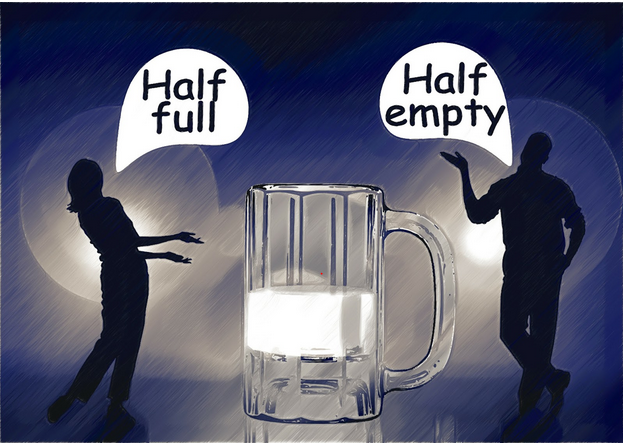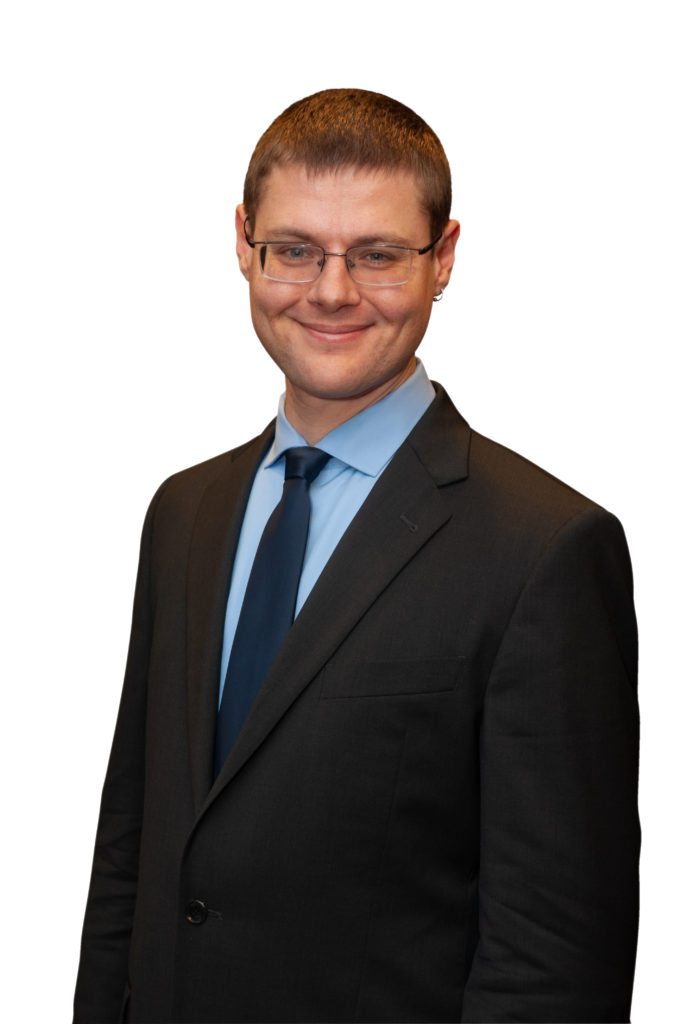
How often do conflicts occur in your enterprise because someone proposed ill-considered or insufficiently thought-out ideas? What about because someone opposed innovative, out-of-the-box ideas?
If you have either problem, you might be plagued by two very common cognitive biases, the optimism bias or the pessimism bias. The optimism bias describes the many people who tend to make overly positive assessments of future risks and rewards, while the pessimism bias refers to those who make excessively negative assessments. These mental blindspots are two out of over one hundred dangerous judgment errors that result from how our brains are wired, what scholars in cognitive neuroscience and behavioral economics like myself call cognitive biases.
These problems plagued a quickly-growing healthcare startup in the Northeast, which experienced a great deal of internal turmoil. The optimistically-minded people on the team generated lots of great new ideas, without thinking through all the potential problems of each idea. For example, they’d suggest an innovative, out-of-the-box marketing strategy to promote their new product, and feel all excited about it.
By contrast, the pessimistically-inclined individuals on the team came up with new ideas much more rarely, because they see all the potential problems of any suggestion, even sometimes seeing the flaws that aren’t there. The pessimists would criticize the optimistic marketing strategy and other ideas, highlighting all the risks of each innovative suggestion, such as punishments by regulators for overhyping medical claims.
As a result, both groups felt defensive and had negative relationships with each other. The optimists perceived the pessimists as nay-sayers who never allow good ideas to go forward. The pessimists perceive optimists as always going off half-cocked, and coming up with flawed efforts.
Different From Each Other, But Stronger Together
Given the differences between them, can you imagine how much more effective pessimists and optimists would be if they came together and played to their strengths?
For instance, optimists should be allowed and encouraged to generate ideas while acknowledging that all ideas are half-baked. Pessimists can then focus on taking these half-baked ideas and bake them further, instead of merely shooting them down.
That was the focus of the changes I worked on at the healthcare enterprise when I was brought in to address the problems in collaboration and improve employee engagement. I especially emphasized the importance of having at least two Devil’s Advocates on a team. Our society usually tends to see pessimism as negative, whereas in reality research shows it’s incredibly important to have contrary positions on a team to make wise decisions. And I say this as an inveterate optimist!
Devil’s Advocates force a team to examine its assumptions and close gaps in its plans. They’re also very helpful to prevent groupthink, the tendency for a group to coalesce around the opinion of the most powerful person in the room.
This rather simple transformation made a drastic improvement in meetings and substantially improved employee engagement. The healthcare team’s optimistically-inclined voices created ideas and then gave them to the pessimists, giving up ownership of their darlings. The pessimists then took the ideas, selected the most viable ones, and fixed their flaws to develop the half-baked notions into well-thought-out project plans.
Finding the Balance
It’s especially important to recognize that a mixed group of pessimists and optimists would work much better compared to having a group composed of just pessimists or just optimists.
If you have just optimists in a group, everyone will perceive their own ideas as brilliant and continuously support each other, at the risk of not filtering out bad ideas. This could result in ideas running in 20 different directions at once.
On the other hand, if you have just pessimists in a group, they won’t create nearly enough new ideas for the needs of our increasingly disrupted world as they would find fault at every turn. This was fine a generation ago, but not now.
Having a mixed group gives you the best of both worlds in generating new ideas and refining it to address problematic spots. When they work together efficiently, pessimists and optimists can ensure that processes are both innovative and thorough, maximizing an organization’s success for the long term.
Mixing It Up
Given that a balanced group of pessimists and optimists can lead to better collaboration and improved employee engagement, it makes sense to be mindful when hiring employees, especially leaders, for your organization.
Be aware that it’s very hard to go against your intuition and hire someone different from you. If you are a pessimist, it would be difficult for you to hire an optimist and vice versa. The same challenge exists when promoting people to higher positions due to the halo effect and the horns effect. The halo effect refers to the fact that if we feel a significant positive emotion toward one characteristic of someone, then we will have an overly positive evaluation of that person as a whole. The horns effect is the opposite: if we don’t like a characteristic that is significant to us, we will tend to have a worse evaluation of that person as a whole.
If you want to succeed as an entrepreneur, you need to be aware of and learn to defeat these cognitive biases. Only by doing so will you be able to make good decisions in hiring and collaboration, whether regarding pessimists and optimists, and in all other areas of your business.
Key Takeaway
Maximize the value that pessimists and optimists bring to your enterprise by helping them work together well. Optimists should generate half-baked ideas and give them to the pessimists, who would select the most viable notions and finish baking them into full-fledged plans. —> Click to tweet
Questions to Consider (please share your answers below)
- What are some examples of when you had difficulty with collaborations between pessimists and optimists?
- Is there anything in the article which can help you make good decisions when hiring pessimists and optimists?
- Which next steps will you take based on reading this article?
Image credit: Pixabay
Originally Published at Disaster Avoidance Experts
Bio: Dr. Gleb Tsipursky is on a mission to protect leaders from dangerous judgment errors known as cognitive biases by developing the most effective decision-making strategies. A best-selling author, he wrote Never Go With Your Gut: How Pioneering Leaders Make the Best Decisions and Avoid Business Disasters (Career Press, 2019), The Truth Seeker’s Handbook: A Science-Based Guide (Intentional Insights, 2017), and The Blindspots Between Us: How to Overcome Unconscious Cognitive Bias and Build Better Relationships (New Harbinger, 2020). He has over 550 articles and 450 interviews in Fast Company, CBS News, Time, Business Insider, Government Executive, The Chronicle of Philanthropy, Inc. Magazine, and elsewhere. His expertise comes from over 20 years of consulting, coaching, and speaking and training as the CEO of Disaster Avoidance Experts, and over 15 years in academia as a behavioral economist and cognitive neuroscientist. Contact him at Gleb[at]DisasterAvoidanceExperts[dot]com, Twitter @gleb_tsipursky, Instagram @dr_gleb_tsipursky, LinkedIn, and register for his free Wise Decision Maker Course.














